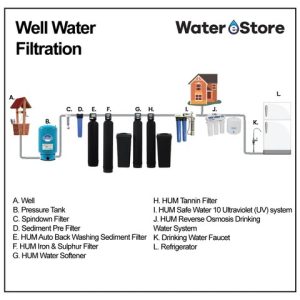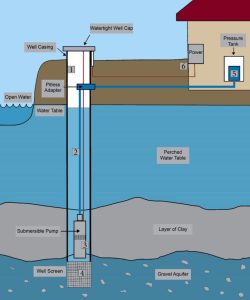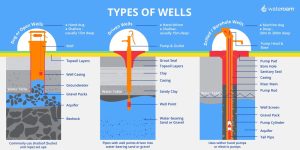


Wells, Water Sources, and Systems in Eastern Ontario
Why Water Systems Matter
Clean, reliable water is a cornerstone of every home. In Eastern Ontario, water can come from municipal systems in towns and cities or from private wells in rural areas. Understanding the type of water source, its quality, and the supporting systems is essential for buyers and homeowners — especially when evaluating long-term maintenance and safety.
Municipal Water Supply
-
Description: Delivered through city infrastructure and billed monthly or quarterly.
-
Pros: Consistent quality, tested and treated to provincial standards, low maintenance for homeowners.
-
Cons: Ongoing utility costs; water hardness or chlorine taste may require additional in-home treatment.
-
Regional Use: Standard in Belleville, Trenton, Picton, and other serviced communities.
Private Wells
Private wells are the most common water source for rural properties in Hastings County, Prince Edward County, and Lennox & Addington. There are several types:
1. Dug Wells
-
Description: Large diameter (1–3 ft.), shallow wells (10–30 ft.) traditionally hand-dug or bored.
-
Pros: Historically common, simple construction.
-
Cons: Shallow depth makes them vulnerable to surface contamination, drought, and bacteria.
-
Status: Found on older farmhouses or cottages, but many are decommissioned or upgraded.
2. Drilled Wells
-
Description: Narrow diameter (4–8 in.), drilled 50–200+ ft. into bedrock or deep aquifers.
-
Pros: Most reliable source, less prone to contamination, stable water supply.
-
Cons: Higher installation cost, may require pumps and treatment.
-
Status: Standard for modern rural homes in Eastern Ontario.
3. Sand-Point Wells
-
Description: Smaller diameter pipe driven into sandy soil or shallow aquifers.
-
Pros: Inexpensive, relatively quick to install.
-
Cons: Limited water yield; not suitable for all soil conditions; prone to seasonal fluctuation.
-
Status: Sometimes found in cottages or seasonal properties.
Water System Components
-
Well Casing: Steel or PVC pipe lining the well to prevent collapse and contamination.
-
Well Cap: Sealed top that prevents debris, pests, and surface water from entering.
-
Pump:
-
Submersible pumps (common in drilled wells) push water up.
-
Jet pumps (common in shallow wells) pull water up.
-
-
Pressure Tank: Regulates water pressure and provides reserve supply for the home.
-
Filtration & Treatment: May include sediment filters, UV lights, softeners, or reverse osmosis systems, depending on water quality.
Water Quality Considerations
In rural Eastern Ontario, water quality can vary significantly based on soil, bedrock, and agricultural activity:
-
Hard Water: High mineral content (calcium, magnesium) is common — water softeners are often installed.
-
Iron/Manganese: Can stain fixtures and affect taste; treated with specialized filters.
-
Bacteria (Coliform/E. coli): Risk in shallow wells or poorly sealed casings; addressed with UV disinfection or chlorination.
-
Sulphur: Sometimes causes a “rotten egg” odour; removable with aeration or filtration.
Buyer and Homeowner Checklist
-
Well Type & Age: Is it dug, drilled, or sand-point? When was it installed?
-
Flow Rate & Recovery: How much water does it produce (litres per minute)? Is this sustainable for the household size?
-
Water Testing: Ontario Public Health Units recommend annual testing for bacteria; additional lab testing for minerals and metals is wise during purchase.
-
Septic Pairing: Many rural homes also have septic systems — both need proper inspection when buying.
👉 In summary, Eastern Ontario homes rely on either municipal water or private wells (dug, drilled, or sand-point). A well system includes the casing, pump, pressure tank, and treatment equipment. For buyers and homeowners, knowing the source, condition, and quality of water is key to ensuring both safety and long-term peace of mind.

